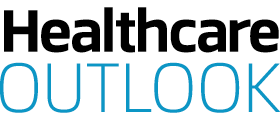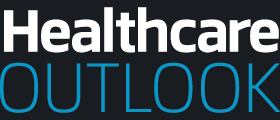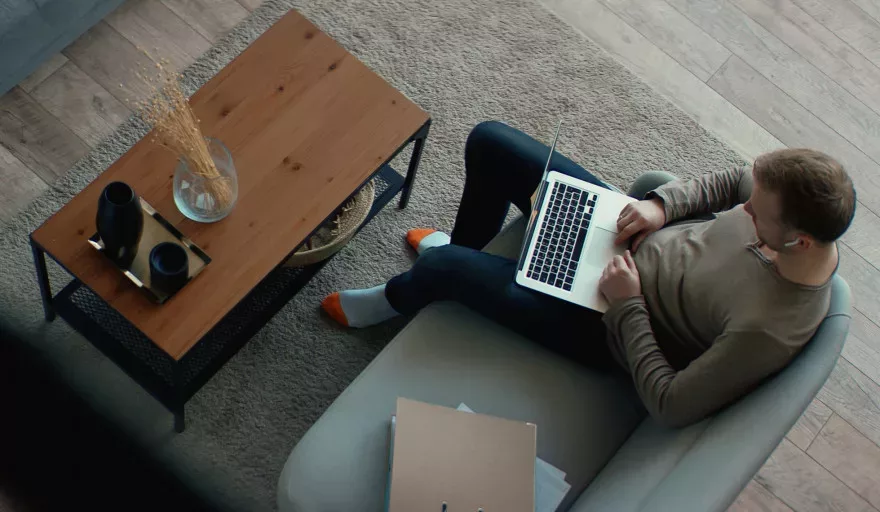We attend the ‘Managing the Transformation of/at Work’ panel event, as UK business leaders discuss how to navigate the new era of work.
WORK IN THE ERA OF SYMPATHY
The future of work has arrived.
This is the opening sentiment expressed by work futurist and author Sophie Wade, at the ‘Managing the Transformation of/at Work’ panel held in London earlier this month. The event coincides with the launch of Wade’s latest title, ‘Empathy Works: The Key to Competitive Advantage in the New Era of Work’.
As Wade observes, due to the unforeseen disruption of the COVID-19 pandemic, we have all been masked (literally) to the transformation taking place within the workspace and must now confront how best to proceed in these uncertain waters.
She is joined in discussion by four other panellists; Managing Partner of business management consultancy firm OE CAM, Martyn Sakol, FinTech specialist and Founder/CEO of KoreLabs Sabrina Del Prete, CEO of Potentialife and expert in positive leadership Angus Ridgway, and finally Haddy Davies – CEng MIChemE and Direct Materials Technical Process Lead at Johnson Matthey’s.
With varying backgrounds and specialities, and suitably different standpoints on the efficacy of remote working, the assembly presents a diverse range of perspectives for discussion. Core issues are debated across the panel, all of which are top of mind for business leaders spanning all sectors and geographies in the wake of COVID-19.
Above all, the panel unpacks the question of how we can transform our businesses and engage and retain the talent needed to achieve sustainable growth in the new era of work.
TECH DRIVING POSITIVE CHANGE
For Ridgway, tech-enabled positive changes have risen to the fore. As concurred by Del Prete, after a significant background in the financial realm, most recently in FinTech, she unpicks the ‘red herring’ behind digital transformation. “It has never been about the tech, but rather about the people,” she observes.
The question of tech-enabled innovation raises the need for advanced motor skill training that will demand both significant time and investment – this is particularly relevant to factory floor shift workers, who are often overlooked in such debates concerning hybrid working, since a physical work presence is typically demanded. “We need to speak into that space and acknowledge the lived experience of people,” says Davies.
This becomes most apparent as Haddy Davies highlights her personal experience, as a wife and mother first and foremost, but also as a highly qualified chemical engineer. As someone whose work necessitates presence in the workspace, the quandary of being forced to adjust to remote working whilst continuing home life became obvious in the early days of the pandemic.
“Building, designing and scaling machines can’t be done remotely. The journey of transition lasted several months,” she reflects.
COVID-19 has been an undeniable accelerator to the future of work. For Del Prete, the pandemic has catalysed the company to jump 10 years ahead. This is widely defined as a technology-driven business environment, that is fast-paced and far from predictable.
LEVELLING THE PLAYING FIELD
This introduces the question of the fairness of home working, and it is a topic that is continually returned to when considering the imbalance of everyone’s circumstances and obligations at home – from childcare responsibilities to the simple hurdle of having poor internet connection.
Yet the benefits soon become apparent.
For Del Prete, an obvious silver-lining was the simple money-saving aspect of not having to occupy a physical office space. Working remotely is not an issue when output is the main focus of everyone’s workload, and in her case, this even had the effect of sharpening perspectives on what needed to be done. As a business leader, she acknowledges, “we are exploring a new reality, and we are all making mistakes. But my job is to move with the times.”
However, all panellists reinforce the notion that remote working is not a one-size-fits all option. Sakol is quick to hazard that companies must not “sleepwalk” into the hybrid model, based on the experience encountered through his clients. Adding to the roster of potential issues, he includes discrimination and exclusion between office workers and those who are remote, such as missing out on key discussions outside of meetings, not to mention the interpersonal elements of an office environment that are so stimulating for us all as social beings.
The event itself serves as the ultimate reminder of personal connection, as a relatively recent example of B2B leaders being able to gather in person.
Ridgway goes on to highlight the gender diversity that benefits from a structured environment such as an office, where women generally are freed from the expectations of traditional gender roles that may be experienced in the home. On the other hand, the matter of people of colour is also raised, who have enjoyed the working from home experience for the freedom from ‘micro-aggressions’ that are often encountered in the workplace which has been widely reported on. This also applies to the comfort levels of those with disabilities having to commute to an office environment where the levels of accessibility may not be as facilitating as they are at home.
“In this brave new world, we have to think of psychological safety. There is no level playing field out of the office,” says Sakol. This statement is immediately countered by Wade, who argues that even in the office, it has never been a level playing field, and that through the pandemic, the glimpses into people’s personal lives opened a window for empathy.
UNLEASHING PURPOSE
In terms of talent management and future growth, the question of focusing on performance as opposed to presence, is a matter of mutual consensus.
Regardless of the working situation, inclusion and empathy are critical fundamentals – whether entirely remote, office-based, or hybrid.
The term ‘hybrid’ itself poses a problem, identified by Ridgway as a “sterile compromise”. Whilst companies explore this unprecedented degree of freedom, it must be a conversation of office functionality – “we need to ask, what is the value proposition of the office?
“We must think of functionality, rather than location,” he adds.
The question of how well senior teams across companies are adapting to new business conditions comes under scrutiny, as does confidence in middle management’s capabilities to engage their teams to meet with customers’ new and changing demands.
This all comes against the unignorable backdrop of ‘The Great Resignation’ – the undeniable proof of the struggle many companies are facing in adapting to this new age. Wade raises the game of “musical chairs” that is currently taking place across industries, as employees hop between companies. She cites the statistic that 48 million people across the US resigned last year alone – so how can employers change the game?
Within this context, Del Prete highlights her mentorship work with younger people, identifying how today, Gen Z are far clearer about their own ambitions. “Success is now measured in a different way. They question how opportunities can fit for them, and how far their money can go before they have to compromise.”
Burnout is the buzzword underlining this entire movement, as employees find themselves overworked and questioning their own sense of purpose.
“Companies must now face the burden of communicating and connecting to purpose,” states Ridgway.
“We have to articulate purpose – live it and feel it, so people know the answer when they ask themselves, “why am I getting up today to do this work?””, Del Prete explains.
Articulating the ‘end-vision’ of why people are doing what they’re doing, whether working in office pods, or in their own front room, is the essential tool of connection and employee retention.
Aside from the communication of purpose as a key means to overcome this – identified by Del Prete as “the secret weapon”- reinforcing culture is also imperative.
“Leaning into culture connects people wherever they are,” says Wade.
“In this brave new world, we have to think of psychological safety. There is no level playing field out of the office”
Martyn Sakol, Managing Partner of business management consultancy firm OE CAM
AN EMPATHETIC FUTURE
Regardless of individual views on the practicalities of the new ways of working, one theme unites all speakers – the necessity of empathy and the enforcement of an individualised approach when leading employees into the future of the workplace.
The etiquette of remote working remains to be established in order to cement boundaries that have become hazy through a work-life balance where home is increasingly becoming the workspace, as Ridgway advocates for the “protective boundaries” that are yet to be finalised.
Sakol confirms that business leaders must master navigating ambiguity, with empathy as the basis of strong leadership. Indeed, it is this concept that must be introduced as a new corporate value.
Gone are the days of a traditional Taylorist working environment, as structures everywhere are now being questioned and re-examined. Structure is inevitably linked to purpose, and structural change invites positive leadership.
“There are ways to have form without fluidity,” says Wade.
In an age that has become defined by different expectations of both life and employment, companies must address the question of how to combine the needs of the individual with the larger objective of the firm. As Ridgway argues, connection is the new process that must be advanced.
Wade draws the animated discussion to a close by reflecting on this continued period of inflection, as internal and external tensions drive transition. “Empathy is the ingredient to achieve sustainable competitive advantage.”
The management and motivation of employees must be enhanced and improved now more than ever before. For anyone who is a member or leader of a workplace, we are all part of this evolutionary journey, and such discussions can only be expected to continue as we forge a new way forward, together.


























